Conference by Angelee Pavanee Annasawmy – Distribution of Micronekton in the South West Indian Ocean
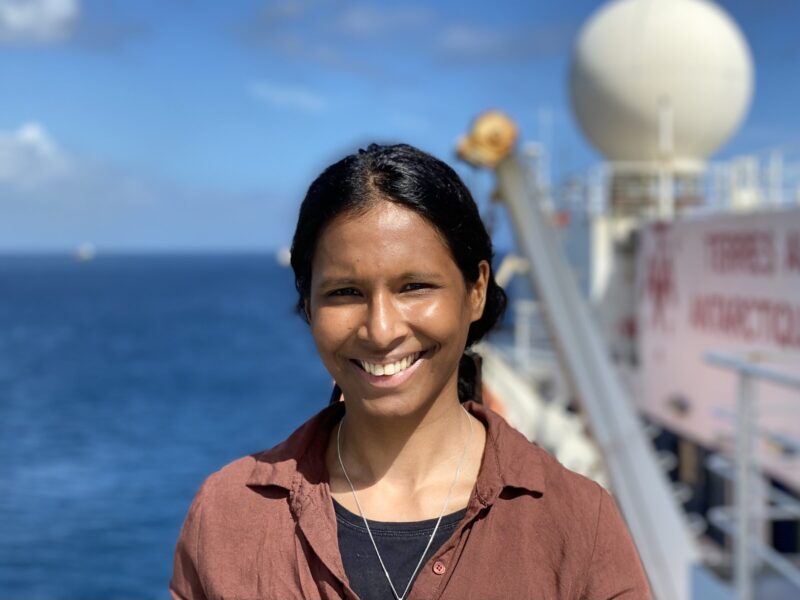
May 2nd, 2022, R/V Marion Dufresne, Mozambique Channel
Authors: Clément Panelle, Salomé Pellé, Ioannis Kalaitzakis, Christophe Mocquet
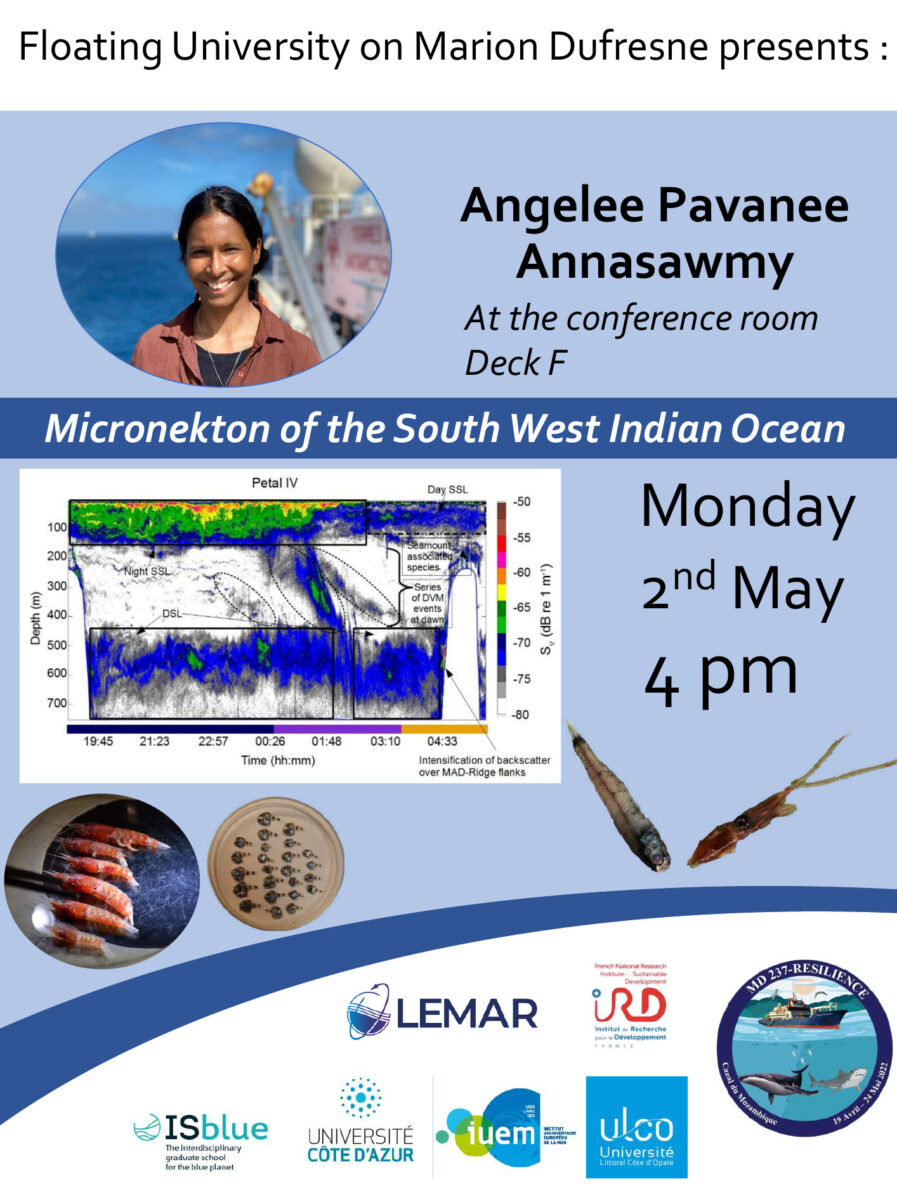
During her conference on board on the Marion Dufresne, Angelee-Pavanee Annasawmy presented part of her research on distribution of micronekton and trace element concentrations in these organisms in Southwestern Indian Ocean. Micronekton is composed of mesopelagic fish, crustaceans, and cephalopods with size between 2-20 cm. Contrary to plankton, they can swim in the water currents. This group of organisms is known to perform vertical migration in the water column, therefore participating in the transfer of organic carbon from euphotic zone (close to the surface) to deeper ocean layers. This group can be seen as a link between zooplankton and top predators.
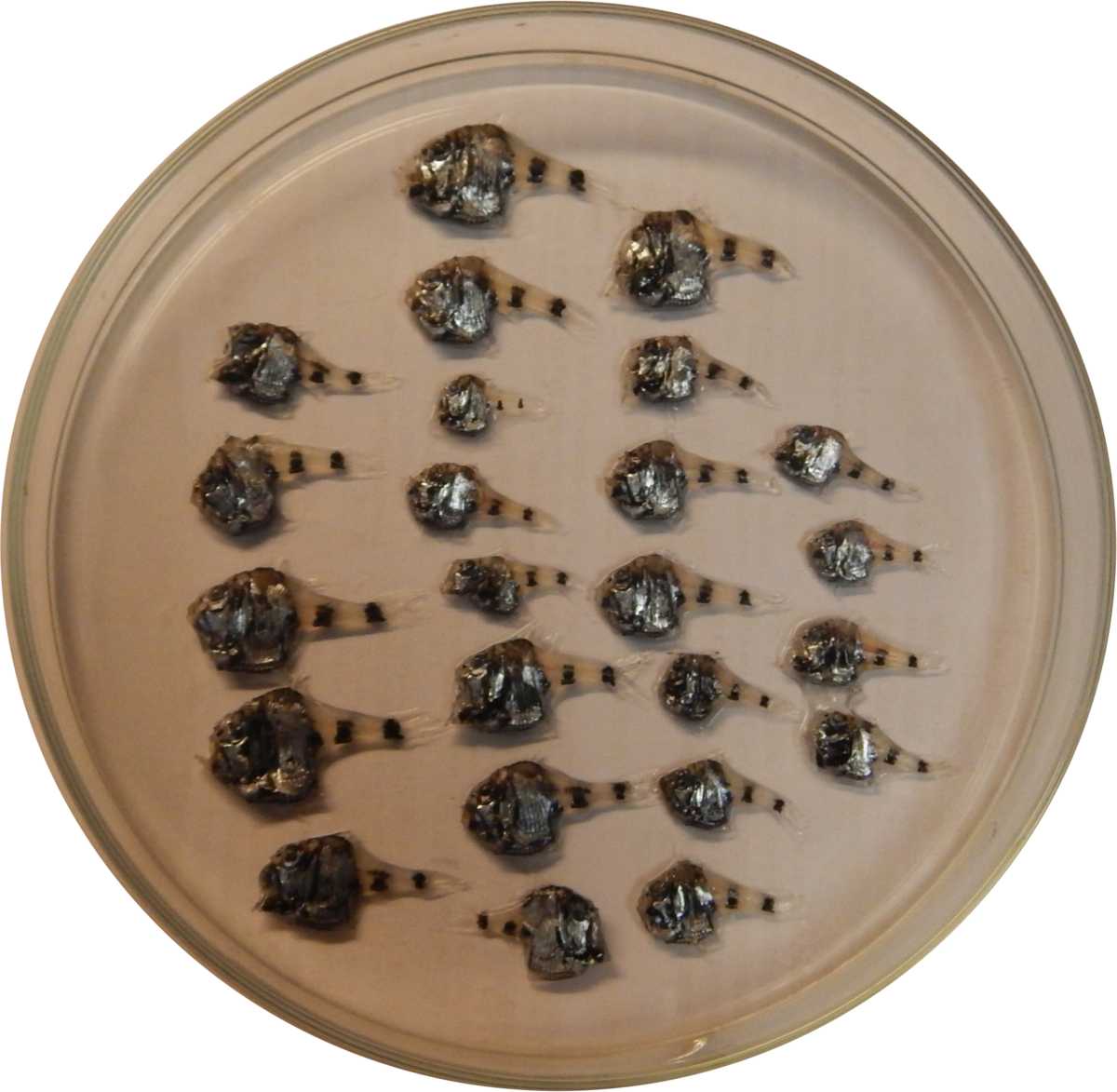
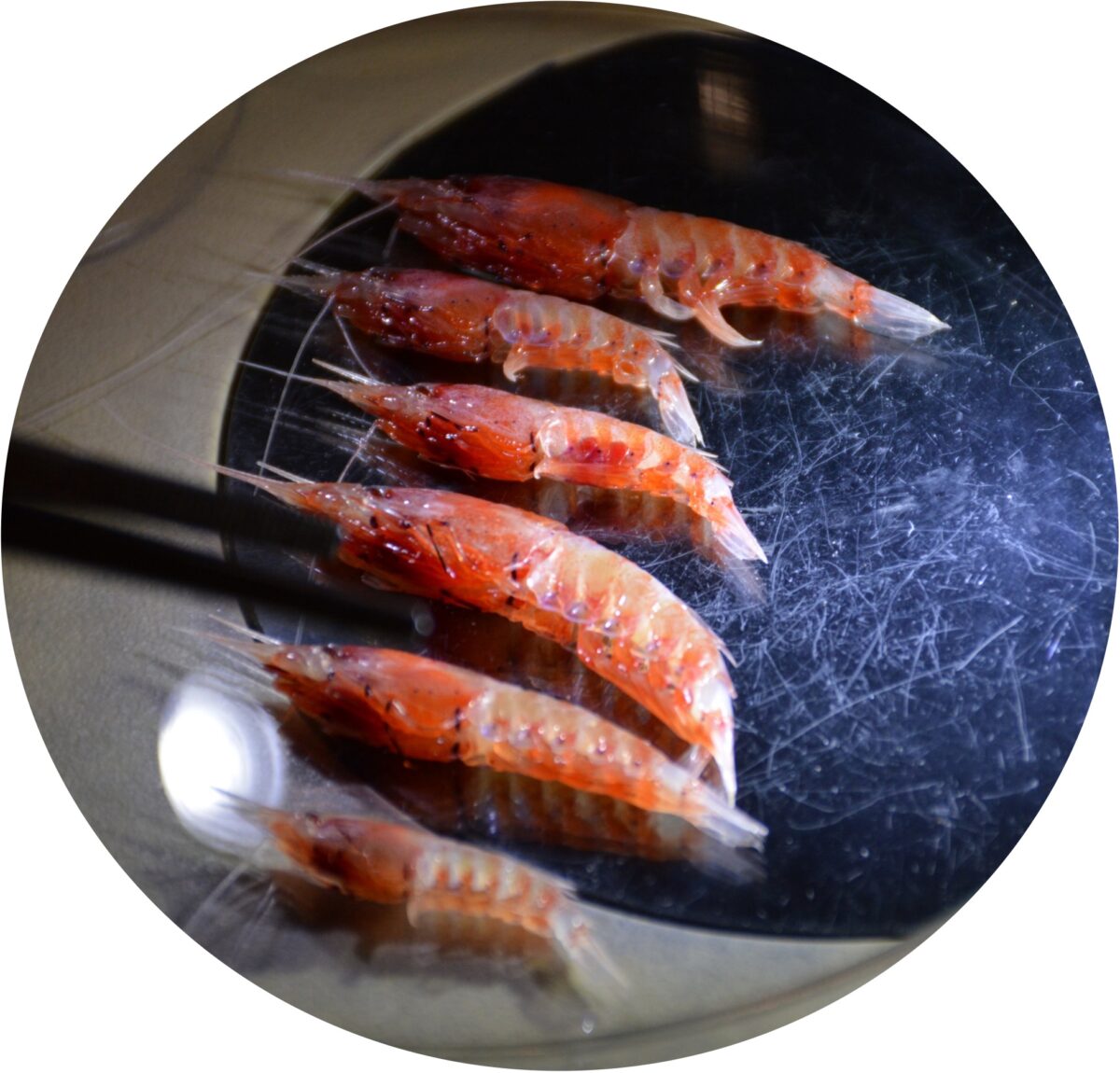
Angelee’s PhD focused on the Indian Southern Subtropical Gyre and the East African Coast. The gyre is oligotrophic (less rich in nutrients) compared to the Mozambique channel, as eddies drive nutrients from land to the channel. She also focused on seamounts, which are topographic obstacles in the ocean floor, more than 1.000 meters height, but remaining below the ocean surface. She was particularly interested in the trophic position of the micronekton and the trace element concentrations in the different taxa, as well as the influence of the eddies and sea mounts on micronekton distribution and communities.
She conducted mesopelagic trawls (nets to catch micronekton) while using active acoustics, combining the data of the two methods (if you want to know more about how active acoustics is used for marine biology studies you can see the summary of the seminar of Anne Lebourges-Dhaussy who works with Angelee at LEMAR). The utilisation of different types of data showed that micronekton migrates down around dawn, stay in the darkness of the depths during the day, and comes back at dusk closer to the surface for the night, supposedly as a feeding and predator avoidance strategy. However, micronekton migration strategy seems influenced by different factors like eddies and seamounts. Species distribution is indeed closely associated to the presence of this topographic obstacle, probably due to their ecological features, such as predation avoidance, feeding, reproduction and rest.
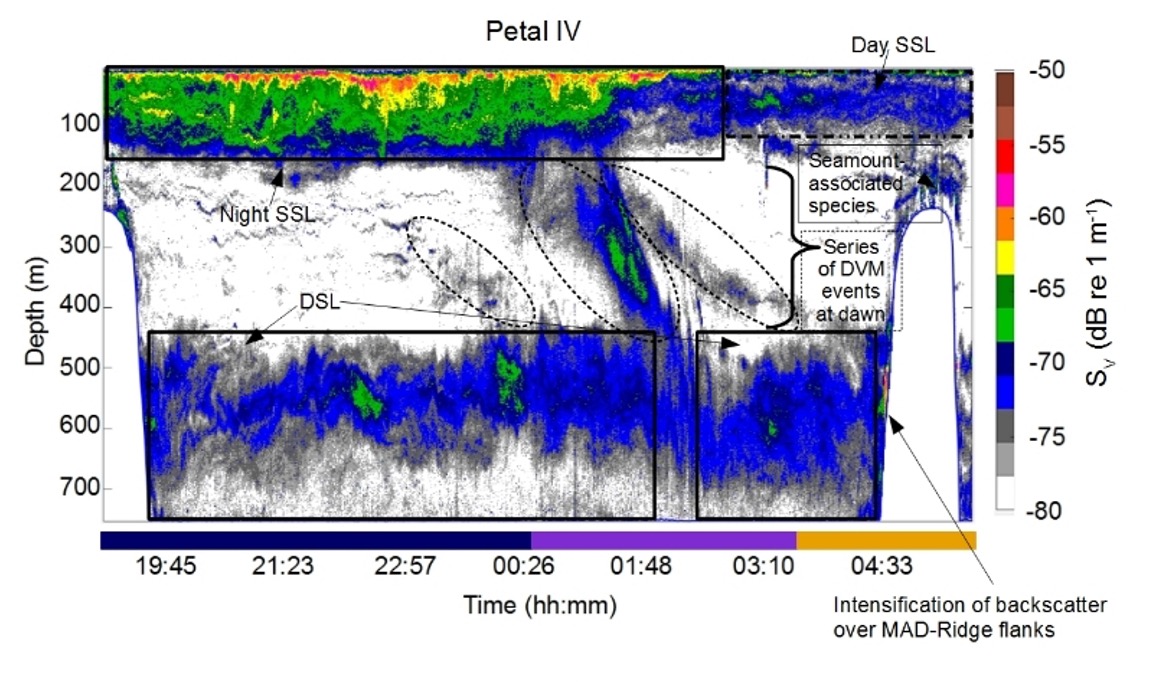
To identify the trophic levels of each taxon (type of organisms) and the geographical origin of their prey, she carried out stable isotope analyses on the organisms and measured concentration of various trace elements. It all appeared to vary according to the taxa, which might be linked to their feeding and migrating habits. The above-mentioned results could be interpreted along with genetic data and other trace element studies for a deeper understanding.
 Attention, vous utilisez un navigateur peu sûr !
Attention, vous utilisez un navigateur peu sûr !